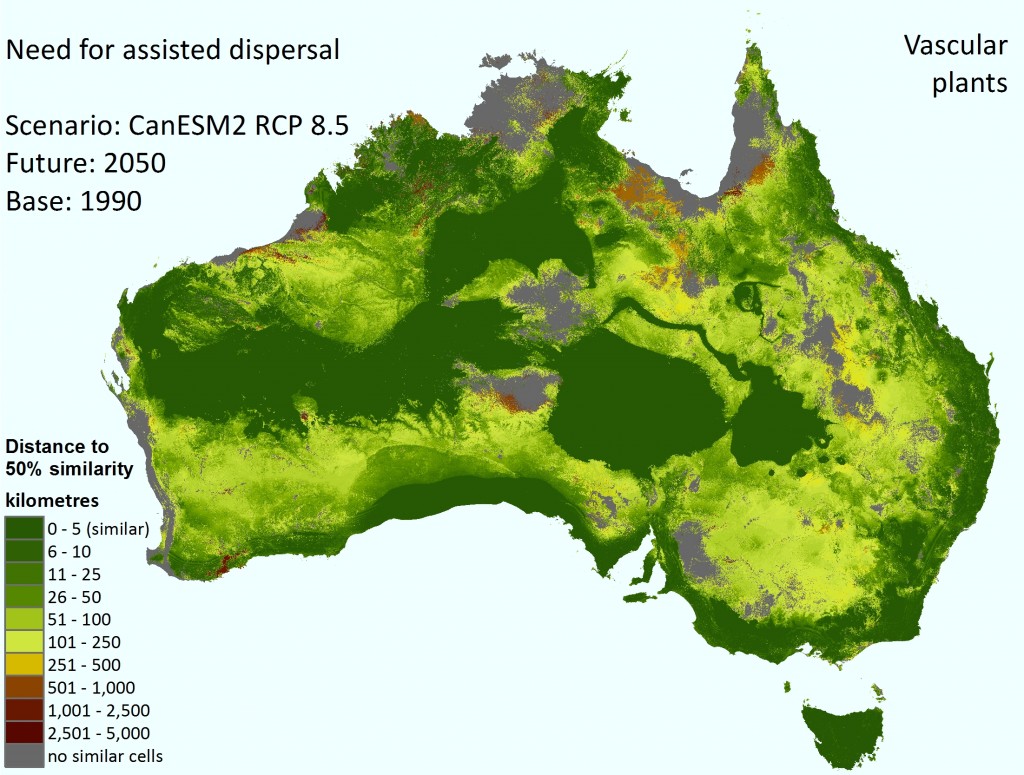Need for assisted dispersal
- Under climate change some species may find it difficult to persist within their historical ranges. If suitable habitats exist only across great distances, these species may benefit from assisted dispersal.
- Need for assisted dispersal is a measure that estimates how far an organism may need to move to find an environment that is at least 50% similar to its current location.
- To calculate need for assisted dispersal, for each location we look into the future to find the closest location anywhere in Australia that has an ecological similarity of at least 0.5 (i.e. 50%) to the baseline (1990) ecological environment. The geographic distance to that location in kilometres is the relative need for assisted dispersal.
Click on the boxes below to explore examples at national and regional scales.
Find out more
Open allClose allThis examples illustrates the national pattern of need for assisted dispersal for vascular plants for the high emissions’ hot CanESM2 climate scenario (2050). The map shows that vascular plants are likely to need to disperse moderate to long distances to find similar ecological environments in the future. These distances are beyond the known dispersal capacity of many species. However, there are also many places where similar ecological environments for vascular plants may be found within 50 km so assisted dispersal may not be a priority.

National-scale view of need for assisted dispersal for vascular plants by 2050 under the high emissions’ hot CanESM2 climate scenario. This measure indicates distance in kilometres to the nearest ecological environment that is projected to be at least 50% similar to the baseline (1990) ecological environment of each cell. Grey areas (no similar cells) show where there is no match with a baseline ecological similarity of 50%. The legend is shown in categories, but the data itself is continuous.
This regional example shows parts of northern Australia where mammals are projected to experience highly variable need for assisted dispersal by 2050 under the high emissions’ hot CanESM2 climate scenario. There is a clear geographic disjunction south of Katherine where the measure shifts from low (greens) to high (oranges) need for assisted dispersal, reverting to low again around Tennant Creek.

Need for assisted dispersal for mammals (A) in parts of the Northern Territory under the high emissions hot CanESM2 climate scenario by 2050, compared with the same scenario for vascular plants (B).
The persistence of suitable vegetation types for shelter and food will be a key factor in determining the outcome for small mammals with limited dispersal ranges. These dependencies are only indirectly represented in the biological models through their common relationship with climate, substrate and landform. Therefore it makes sense to consider the projected outcomes for vascular plants and mammals together (compare a and b).
